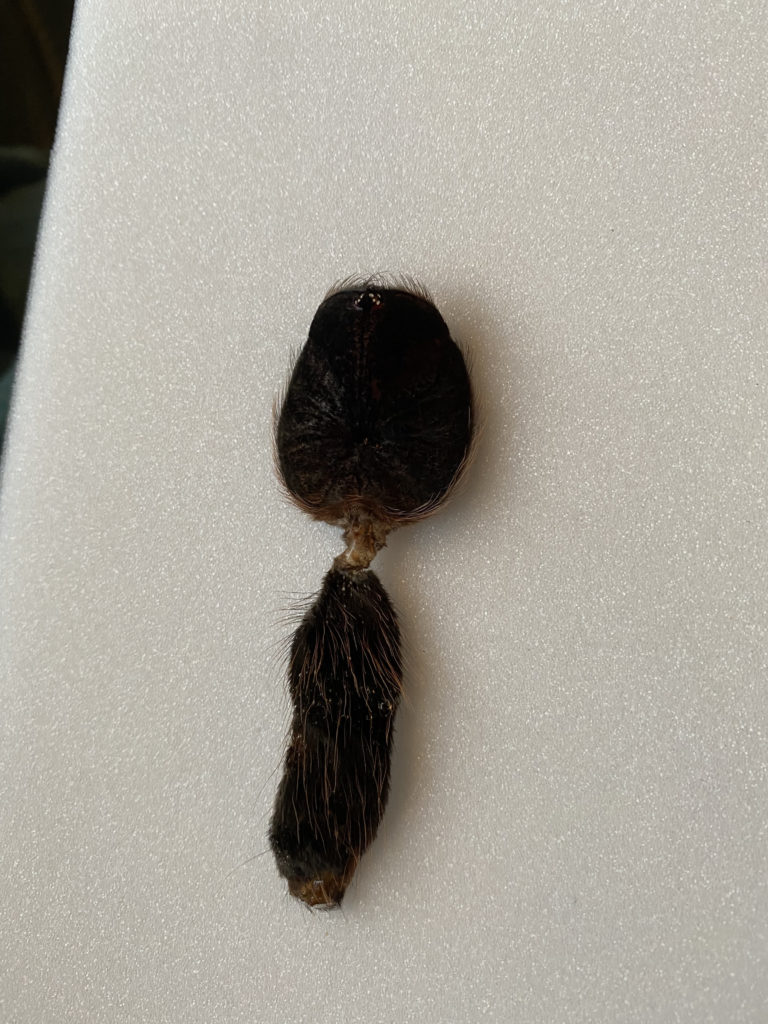Welcome Back to the Lab!
As our animals molt and grow, we try our best to preserve their cast-off exoskeletons (molts) so that we can use them in our education programs. Recently, our Brazilian salmon pink birdeater (Lasiodora parahybana) molted, so I took the opportunity to mount her molt.
Preserving molts is not just an artistic pursuit; molts can provide invaluable information about spider anatomy and are excellent tools to use when discussing the molting process. But mounting molts – the process of displaying them – can be a tricky and delicate task.
First, the molts have to be “relaxed.” This involves placing the molts in a humid environment for hours to days at a time in order to allow them to be more easily manipulated. The molts become dry and brittle after a short period of time, and will break if not handled with care.
When tarantulas molt, they will first cast off the top of the cephalothorax (seen on the left). It opens like a hatch, and the spider will slip off the rest of their exoskeleton in one piece. Sometimes, other parts of the exoskeleton will tear; again, the molts are extremely fragile. On the right is a torn piece of the abdomen; the spinnerets are visible.

The fangs and chelicerae of our freshly molted L. parahybana. Spider fangs grow bigger with each molt; our goliath bird eater’s fangs are currently similar in size to those of a house cat! For this molt, I decided to dissect the fangs in order to display them better.

The relaxed legs are easy to move into place and are held in position by pins. Once this molt dries out again, the pins can be removed and the parts can be displayed with corresponding labels.

I also took the time to mount one of our favorite educational molts: Carla, the Mexican red-kneed tarantula (Brachypelma smithi). Carla’s exoskeleton came off in one nearly-perfect piece; but one of her legs was stuck in the molt, so she was forced to self-amputate (yeah, spiders can do that). This molt is a great example of spider resilience. Since losing her leg, Carla has started re-growing a new one. After she molts again, her new leg will hardly be distinguishable from the others.
Until next time, thanks for visiting the lab!
Bug Wrangler Brenna
brenna@missoulabutterflyhouse.org





